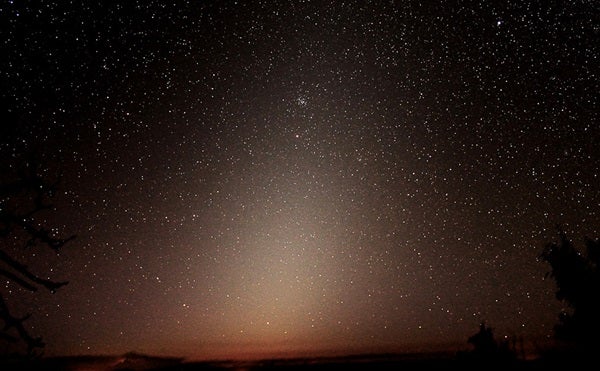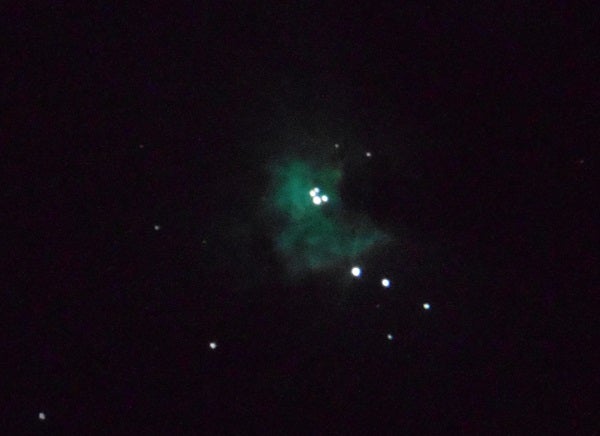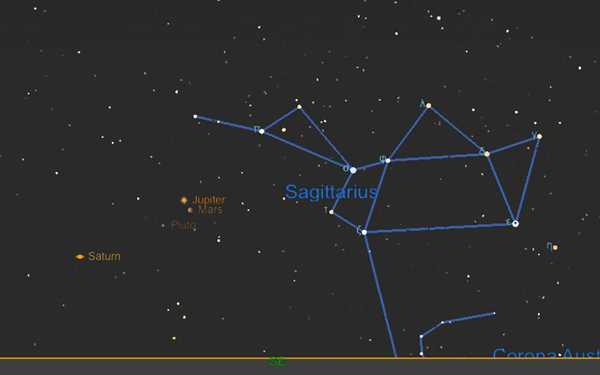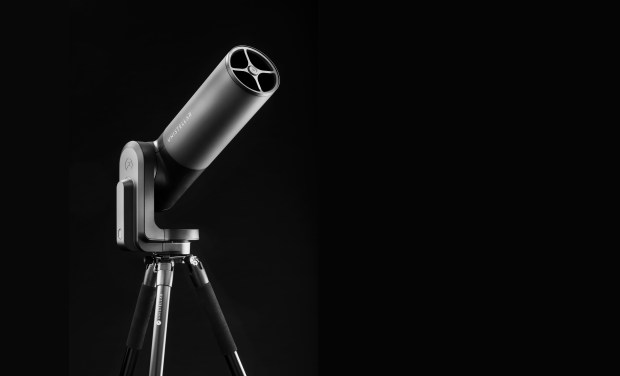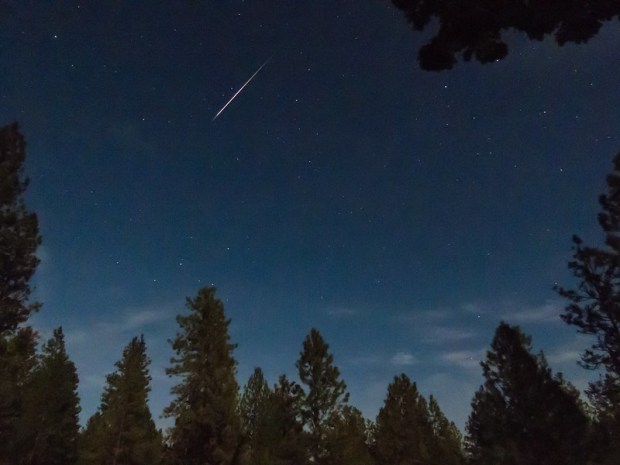This Friday the 13th, consider that the idea of martians living on and shaping the Red Planet was once commonly held even by professional astronomers. Today is the 165th anniversary of the birth of Percival Lowell in 1855. In addition to founding the observatory that today bears his name in Flagstaff, Arizona, Lowell was also a proponent of the idea that dark, blurry line-like features on Mars were plants that had sprung up along the edges of martian-built canals.
Today, our search for martian life is largely limited to looking for ancient microorganisms in soil and rock samples taken by rovers such as Curiosity. But you can examine the famous Red Planet for yourself early this morning if you’re willing to rise before the Sun. An hour before the Sun crosses the horizon, magnitude 1 Mars will stand 17° above the southeast horizon, to the left of Sagittarius’ familiar teapot asterism.
Saturday, March 14
Asteroid 27 Euterpe reaches opposition at 2 P.M. EDT today. You can find it in the evening sky in the constellation Virgo, already above the horizon at sunset and climbing higher overhead. Wait for full darkness before hunting this magnitude 9.4 asteroid, which lies just over twice as far from the Sun as Earth. You’ll need a moderate-size telescope to spot it a little less than 2° southwest of magnitude 2 Nu (ν) Virginis.
Sunday, March 15
The month of March is a great time to try observing the zodiacal light — light scattered by the dust left along the ecliptic plane by long-ago comets. Step outside at a dark site after twilight and look for a roughly cone-shaped glow in the west. Although dim, you may be able to trace the zodiacal light as it stretches through Pisces, low on the horizon, up through Aries and Taurus. If you can’t spot it at first, try using peripheral vision to look at the region next to where you expect the zodiacal light to appear; it might pop up more easily at the corner of your field of view.
Monday, March 16
Last Quarter Moon occurs at 5:34 A.M. EDT. If you’re up before sunrise, you can spot our satellite as it hangs in the southeast between the brightest stars in Sagittarius, which sits low on the horizon, and Ophiuchus, higher in the sky.
Because the Moon doesn’t rise until early in the morning, this evening might be a good time to aim your gaze toward some more distant objects. The Orion Nebula (M42) is a great naked-eye, binocular, and telescope target. As a bonus, the nebula often looks green to visual observers — perfect for Saint Patrick’s Day. Look first for a diffuse glow below the famous Hunter’s belt in the southwest after dark. You’ll see increasing detail with binoculars, and even more with a telescope. The four bright, young stars of the Trapezium are easily distinguishable amidst Orion’s star-forming gas and dust, even with a 3-inch aperture.
Wednesday, March 18
Today is the 55th anniversary of man’s first spacewalk, performed by cosmonaut Alexei Leonov during the Voskhod 2 mission. It’s also a great day to watch the waning crescent Moon — the goal of the great 20th-century space race — slide past two bright planets in the early morning sky. Look southeast to watch our satellite pass 0.7° south of Mars at 4 A.M. EDT. Two hours later, the Moon slips 1.5° south of Jupiter at 6 A.M. EDT.
Although you won’t be able to spot the tiny dwarf planet in the daytime glare of the Sun, the Moon also passes 0.9° south of Pluto at 11 A.M. EDT. Our satellite rounds out its close encounters by passing 2° south of Saturn at 8 P.M. EDT, although moonrise won’t occur until early the next morning and the event takes place below the horizon.
Thursday, March 19
Today is officially the first full day of spring. The date also marks the first of two planetary conjunctions that take place this month. If you’re willing to rise early, look southeast in the two hours or so before sunrise. There, you’ll spot brilliant Mars (magnitude 0.9) 0.7° south of Jupiter (magnitude –2.1). The pair lies roughly 5.5° below Rho1 (ρ1) Sagittarii. Look east of the pair, and you’ll get an added bonus: Saturn shines at magnitude 0.7, 7° east of Jupiter.

Our exclusive Sky Guide 2020 is now available! This free downloadable pamphlet contains a month-by-month rundown of 2020’s biggest celestial events, from Mars’ best opposition in years to the return of totality in South America this December. Check out Astronomy’s Sky Guide 2020 now!

